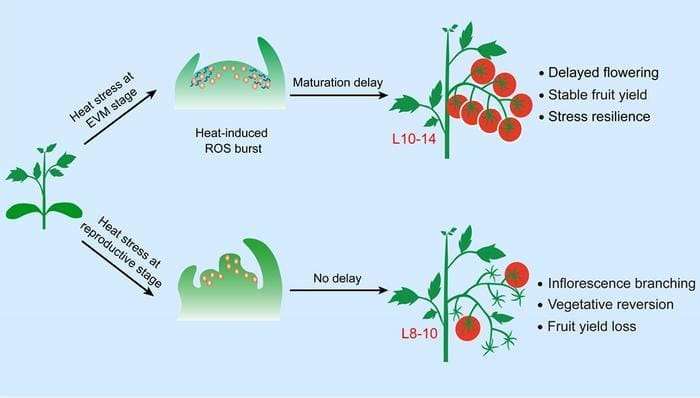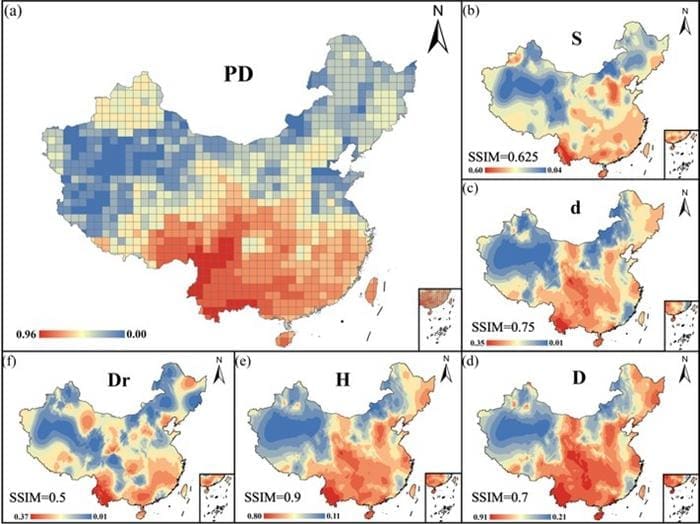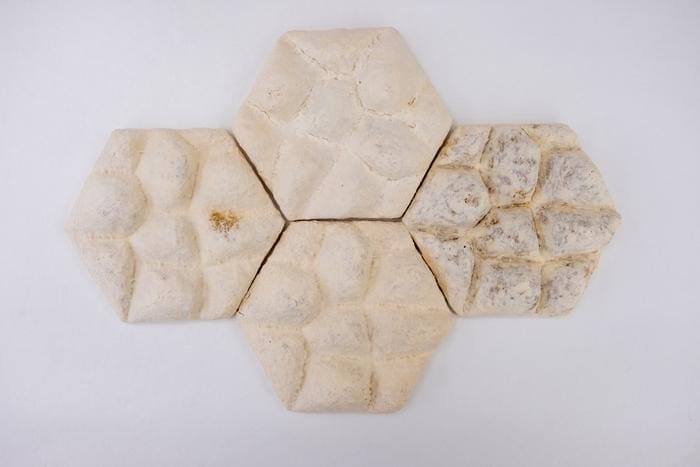Explore the latest insights from top science journals in the Muser Press daily roundup, featuring impactful research on climate change challenges.
In brief:
Hunga volcano eruption cooled, rather than warmed, the Southern Hemisphere
When Hunga Tonga–Hunga Haʻapai, an underwater volcano near Tonga in the South Pacific Ocean, erupted in 2022, scientists expected that it would spew enough water vapor into the stratosphere to push global temperatures past the 1.5 C threshold set by the Paris Accords.
A new UCLA-led study shows that not only did the eruption not warm the planet, but it actually reduced temperatures over the Southern Hemisphere by 0.1 C.
The reason: The eruption formed smaller sulfate aerosols that had an efficient cooling effect that unexpectedly outweighed the warming effect of the water vapor. Meanwhile, the water vapor interacted with sulfur dioxide and other atmospheric components, including ozone, in ways that did not amplify warming.
While that’s good news, the study also suggests that efforts to reverse climate change by loading the atmosphere with substances that react with solar radiation to send heat back out into space, an effort known as geoengineering, are potentially even riskier than previously thought and must take new complications into account.

“If we plan to use approaches that involve releasing sulfate aerosols into the stratosphere to reflect sunlight, we have to consider how other factors — such as water vapor and atmospheric mixing — could change the outcome,” said UCLA atmospheric scientist Ashok Gupta, the first author of a paper describing the findings in Communications Earth and Environment. “The overall impact of such measures depends on understanding the complex interactions among atmospheric components that affect the formation and properties of stratospheric sulfate aerosols.”
The Hunga Tonga volcano erupted Jan. 15, 2022, from a vent just 200 meters below the ocean’s surface, shooting an enormous amount of water vapor, along with a moderate amount of sulfur dioxide, into the stratosphere. The sulfur dioxide was quickly converted into tiny particles called sulfate aerosols that reflect sunlight back into space. Scientists were concerned because sulfate aerosols and water vapor have opposite climate effects. Sulfate aerosols lead to cooling in the atmosphere. Past volcanic eruptions, such as that of nearby Pinatubo in 1991, have had this kind of cooling effect on the climate.
On the other hand, water vapor, a greenhouse gas, cools the stratosphere but warms the Earth’s surface. But this effect also has to do with the water vapor’s altitude: The higher into the stratosphere it goes, the greater the warming effect on Earth. Given the quantity of high-altitude water vapor from the Hunga eruption and the relatively small amount of sulfur dioxide, an increase in global warming seemed the most likely result.
Methods for studying the volcanic emissions
Gupta and UCLA atmospheric sciences professor Jasper Kok worked with Ralf Bennartz and Kristen Fauria at Vanderbilt University and Tushar Mittal at Pennsylvania State University to study how volcanic emissions spread throughout the atmosphere over the two years following the eruption and how they affected the Earth’s energy balance. They used satellite data to track the distribution of water vapor, sulfate aerosols and ozone over time and space.
Next, they analyzed how these satellite observations revealed the impact of altered stratospheric water vapor, sulfate aerosols and ozone on the interaction between solar radiation and the Earth’s heat. This detailed analysis helped them determine how the volcanic eruption changed the movement of energy in the atmosphere and affected surface temperatures.
How researchers discovered the volcano caused cooling
The analysis showed that these components caused almost instantaneous net radiative energy losses, or cooling, at both the top of the atmosphere and near the tropopause, the boundary separating the troposphere (the lowest layer of Earth’s atmosphere) from the stratosphere, resulting in a cooling of about 0.1 C in the Southern Hemisphere by the end of 2022 and 2023.
The sulfate aerosols were about 50% smaller than those that occurred after the Pinatubo eruption, which made them better at blocking sunlight and cooling the atmosphere in spite of the heavy water vapor load. Smaller particles move more erratically and, therefore, have more chances to reflect sunlight. The surprising result came because the researchers included ozone and other components of the atmosphere in their analysis, while previous studies focused mostly on sulfate aerosol and water vapor.
This study shows that shallow undersea eruptions can trigger complex changes in the atmosphere. While the Southern Hemisphere experienced a cooling effect largely due to particles that bounce sunlight away, some signs hint at a very slight warming influence due to this eruption in the Northern Hemisphere because water vapor can linger for years in the stratosphere. But overall, the 2022 Hunga eruption induced a slight cooling effect on the planet from 2022.
“The bottom line is that sulfate aerosols did indeed contribute to temporary cooling in the Southern Hemisphere, although the overall magnitude was relatively small,” said Gupta. “Part of this cooling effect can be attributed to sulfate aerosols being in a ‘sweet spot’ in terms of particle size, an outcome influenced by complex chemical interactions and stratospheric mixing processes still not fully understood.
“This work also highlights that geoengineering efforts can have multiple, potentially unforeseen consequences. It is crucial to thoroughly understand a given atmospheric system to determine whether a proposed geoengineering approach will ultimately lead to cooling or warming.”
***
The research was funded by NASA, the National Science Foundation and the Simons Foundation.
Journal Reference:
Gupta, A.K., Mittal, T., Fauria, K.E. et al., ‘The January 2022 Hunga eruption cooled the southern hemisphere in 2022 and 2023’, Communications Earth & Environment 6, 240 (2025). DOI: 10.1038/s43247-025-02181-9
Article Source:
Press Release/Material by Holly Ober | University of California – Los Angeles (UCLA)
Tomato plants delay shoot meristem maturation to achieve heat-stress resilience
As global temperatures continue to rise, extreme heatwaves pose a significant threat to agricultural productivity. Studies estimate that for every 1°C increase above pre-industrial levels, crop yields decline by approximately 6-8%. The ability of plants to withstand heat stress is therefore critical for ensuring food security, yet the underlying molecular mechanisms have largely remained elusive.
Now, however, a new study led by Prof. XU Cao’s team at the Institute of Genetics and Developmental Biology (IGDB) of the Chinese Academy of Sciences sheds light on an adaptive strategy that may be pivotal in developing heat-resilient crop varieties amid escalating climate change. Specifically, the study reveals a novel mechanism by which tomato plants actively mitigate heat stress and stabilize yield through the developmental reprogramming of shoot apical stem cells.

The research was published in Developmental Cell on April 2.
Stem cells in the shoot apical meristem (SAM) are essential for aerial morphogenesis — the process by which plants develop above-ground structures — and directly influence crop yield. However, heat stress can cause abnormal differentiation or even necrosis of these stem cells, resulting in developmental defects, plant mortality, and significant yield losses. Understanding how SAM stem cells adapt to heat stress is therefore critical for advancing cultivation techniques and breeding more resilient crop varieties.
In their study, Prof. XU Cao and his team identified a key molecular adaptation mechanism in tomato plants. Under heat stress, reactive oxygen species (ROS) accumulate and promote the phase separation of TERMINATING FLOWER (TMF), a floral repressor. This modification prolongs the transcriptional repression of floral identity genes by TMF condensates, effectively reprogramming SAM development. By delaying shoot maturation, the plant extends vegetative growth, allowing it to avoid premature reproductive transitions under unfavorable conditions.
During early vegetative growth, tomato plants can enter a dormancy-like state in response to heat stress, temporarily suspending their maturation program. Once temperatures normalize, development resumes, ensuring stable yields. This strategic suspension has been shown to prevent 34–63% of yield losses in the first fruit truss, highlighting its significant role in heat resilience.
The study proposes that this redox-controlled bet-hedging mechanism functions as a survival strategy for sessile plants, enabling them to delay flowering during adverse conditions while ensuring reproductive success once environmental stresses subside.
The researchers emphasized that this discovery provides a new conceptual framework for developing climate-smart crops with environmentally responsive yield stability. The mechanistic insights identified in this study could guide precision breeding efforts aimed at improving agricultural productivity in a changing climate.
Journal Reference:
Huang, Xiaozhen et al., ‘ROS burst prolongs transcriptional condensation to slow shoot apical meristem maturation and achieve heat-stress resilience in tomato’, Developmental Cell (2025). DOI: 10.1016/j.devcel.2025.03.007. Also available on ScienceDirect.
Article Source:
Press Release/Material by IGDB | Chinese Academy of Sciences (CAS)
Climate change and human activity threaten plant diversity — can ancient pollen help predict the future?
The world is experiencing its sixth mass extinction, driven by global warming and human activities. According to Prof Xiaomin Fang from the Institute of Tibetan Plateau Research, Chinese Academy of Sciences (CAS), in China, over 10% of China’s vascular plant species are now threatened. To protect modern biodiversity, a deeper understanding of evolutionary history and geological records is imperative.

Traditional studies on ancient plant diversity, however, rely on fossilized leaves and stems, and these records are often fragmented due to preservation biases. Prof Fuli Wu, a Cenozoic palynology expert, explains. “Plant spores and pollen offer a solution—they are abundant, well-preserved, and can fill gaps left by macrofossils.”
In a new study that brought together the two experts and a team of researchers in China, modern pollen data were analyzed with biodiversity indices applied to reconstruct angiosperm diversity patterns across China. Lead author Dr Yuxuan Jiang standardized pollen-derived diversity metrics and compared them to modern plant distributions using the structural similarity index measure (SSIM), a novel approach in palynology.
“Our results show that the Shannon-Wiener index (H) and the Berger-Parker index (d) indices most closely matched modern diversity patterns, making them optimal tools for reconstructing past biodiversity. Moreover, we found climate strongly influenced diversity, with coldest –month temperatures being the dominant factor, followed by annual precipitation,” shares Jiang.
“Our work highlights the importance of winter temperatures in shaping plant biodiversity,” adds Wu, “This insight should guide conservation strategies, particularly under climate change.”
The study, published in KeAi’s Plant Diversity, paves the way for tracking plant diversity evolution through pollen records, offering a scientific basis for predicting and protecting biodiversity in a warming world with increasing extreme events.
Journal Reference:
Yuxuan Jiang, Fuli Wu, Xiaomin Fang, Haitao Wang, Yulong Xie, Cuirong Yu, ‘Effective palynological diversity indices for reconstructing angiosperm diversity in China’, Plant Diversity 47, 2, 244-254 (2025). DOI: 10.1016/j.pld.2025.01.004
Article Source:
Press Release/Material by KeAi Publishing
NTU Singapore scientists create ‘fungi tiles’ with elephant skin texture to cool buildings
A team of scientists led by Nanyang Technological University, Singapore (NTU Singapore) have developed ‘fungi tiles’ that could one day help to bring the heat down in buildings without consuming energy.
These wall tiles are made from a new biomaterial combining fungi’s root network – called mycelium – and organic waste. Earlier research has shown that mycelium-bound composites are more energy efficient than conventional building insulation materials such as expanded vermiculite and lightweight expanded clay aggregate.
Building on this proven insulating property, the NTU Singapore team worked with local ecology and biomimicry design firm bioSEA to add a bumpy, wrinkly texture to the tile, mimicking an elephant’s ability to regulate heat from its skin. Elephants do not have sweat glands and rely on these wrinkles and crevices on their skin to regulate heat.
In laboratory experiments, the scientists found that the cooling rate of their elephant skin-inspired mycelium tile was 25 per cent better than a fully flat mycelium tile, and the heating rate was 2 per cent lower. They also found that the elephant skin-inspired tile’s cooling effect improved a further 70 per cent in simulated rain conditions, making it suitable for tropical climates.
The construction industry accounts for nearly 40 per cent of all energy-related emissions worldwide, so the search for eco-friendly insulation materials is critical. NTU’s Associate Professor Hortense Le Ferrand, who led the study, said mycelium-bound composites could be a promising alternative.

Assoc Prof Le Ferrand, who holds a joint appointment at NTU’s Schools of Mechanical and Aerospace Engineering (MAE) and Materials Science and Engineering (MSE), said: “Insulation materials are increasingly integrated into building walls to enhance energy efficiency, but these are mostly synthetic and come with environmental consequences throughout their life cycle. Mycelium-bound composite is a biodegradable material that is highly porous, which makes it a good insulator. In fact, its thermal conductivity is comparable to or better than some of the synthetic insulating materials used in buildings today.
“We worked closely with bioSEA to integrate natural design principles that can optimise its performance as a building insulator. The result is a promising proof of concept that takes us one step closer to efficient, sustainable, and cheaper passive cooling solutions in hot and humid conditions.”
Dr Anuj Jain, the Founding Director of bioSEA explained the inspiration behind the elephant-linked innovation: “Elephants are large animals that live in hot and sometimes humid tropical climates. To withstand the heat, elephants evolved to develop a skin that is heavily wrinkled which increases water retention and cools the animal by evaporation. We were inspired by how an elephant could cool itself in hot weather without sweat glands, and tried to see how we could replicate the same cooling mechanisms of shading, trapping cool air, and increasing the surface area for water to evaporate.”
This study, published in Energy & Buildings, builds on Assoc Prof Le Ferrand’s work on possible uses for mycelium-bound composites, such as for greener construction materials.
Turning fungi into a functional material
Mycelium-bound composites are created by growing fungi on organic matter such as sawdust or agricultural waste. As the fungus grows, it binds the organic matter into a solid, porous composite.
For this study, the NTU scientists used the mycelium of oyster mushroom (Pleurotus ostreatus) – a commonly found fungus – and bamboo shavings collected from a furniture shop.
These two components were mixed with oats and water and packed into a hexagonal mould with an elephant skin-inspired texture designed by bioSEA using computational modelling and algorithms to select the optimal design.
The mycelium tiles were left to grow in the dark for two weeks, then removed from the hexagonal mould and left to grow in the same conditions for another two weeks.
Finally, the tiles were dried in an oven at 48°C for three days. This final step removes any remaining moisture, prohibiting further mycelial growth.
Elephant skin-inspired texture improves heat regulation
Previous research has shown that mycelium-bound composites have thermal conductivity comparable to conventional building insulation materials like glass wool and extruded polystyrene.
To assess how an elephant skin-inspired texture affects the mycelium tile’s heat regulation, the scientists heated mycelium tiles on a 100°C hot plate for 15 minutes and tracked temperature changes using an infrared camera.
They found that the elephant skin-inspired tile absorbed heat more slowly. When its bumpy textured surface faced the heat source, its temperature increased by 5.01°C per minute, compared to 5.85°C per minute when its flat surface was exposed to heat. As a control, the scientists also heated a flat mycelium tile and found it gained 5.11°C per minute.
To measure the tile’s cooling efficiency, the scientists heated one side at 100°C for 15 minutes, then exposed it to ambient conditions (22°C, 80% humidity) and measured temperature changes on the tile’s opposite side.
The elephant-skin-inspired tile cooled fastest when heated from the flat side, losing 4.26°C per minute. When heated from the textured side, its flat side lost 3.12°C per minute. The fully flat control tile lost 3.56°C per minute.
Based on these findings, the scientists recommended installing the tiles with the flat side adhered to the building façade and the textured surface exposed to external heat for optimal thermal performance (See image in Notes to Editor for how tiles could be used).
Tiles perform better in wet weather
To simulate the effect of rain on the tiles, the scientists heated the tiles as described earlier. While allowing them to cool, the scientists sprayed water onto the tiles at one-minute intervals over a 15-minute period.
When misted on its bumpy side, the elephant skin-inspired tile lost 7.27°C per minute – a 70 per cent improvement compared to its performance in dry conditions.
The scientists attributed this effect to the mycelium-bound composite’s hydrophobic nature. “The fungal skin that develops on the tile’s surface repels water, allowing droplets to remain on the surface rather than roll off immediately. This promotes evaporative cooling, increasing the cooling rate,” explained Eugene Soh, an NTU researcher and the study’s first author.
Building on this proof of concept, the scientists are now exploring ways to enhance the tiles for real-world use, such as increasing their mechanical stability and durability or using different mycelium strains.
The scientists are also working with local start-up Mykílio to scale up the size of the mycelium tiles and conduct outdoor tests on building façades.
A challenge they foresee in scaling up the production of the tiles is the time needed to grow the mycelium tiles. While it requires minimal energy resources, the process takes three to four weeks.
The scientists also expect high inertia towards using mycelium tiles as an alternative construction material due to the well-established infrastructure in production, storage, and transportation of common insulating materials.
Said Assoc Prof Le Ferrand: “We’ve developed a promising eco-friendly alternative that transforms waste into a valuable resource while rethinking conventional thermal management materials. This opens the pathway for more elephant skin-inspired designs and the use of different mycelium strains to overcome the challenges that come with using mycelium tiles as an alternative construction material.”
Journal Reference:
Eugene Soh, Nicholas Loh, Jia Heng Teoh, Anuj Jain, Hortense Le Ferrand, ‘Biodegradable mycelium tiles with elephant skin inspired texture for thermal regulation of buildings’, Energy and Buildings 328, 115187 (2025). DOI: 10.1016/j.enbuild.2024.115187
Article Source:
Press Release/Material by Nanyang Technological University
Featured image credit: Gerd Altmann | Pixabay




